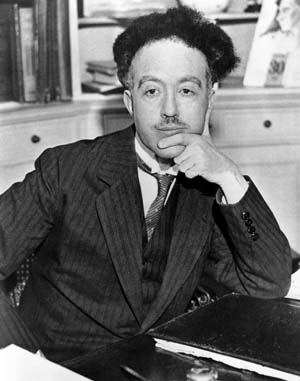Louis de Broglie (nonfiction): Difference between revisions
No edit summary |
No edit summary |
||
| Line 25: | Line 25: | ||
* [[Erwin Schrödinger (nonfiction)]] | * [[Erwin Schrödinger (nonfiction)]] | ||
External links | == External links == | ||
* [https://en.wikipedia.org/wiki/Louis_de_Broglie Louis de Broglie] @ Wikipedia | * [https://en.wikipedia.org/wiki/Louis_de_Broglie Louis de Broglie] @ Wikipedia | ||
| Line 31: | Line 31: | ||
[[Category:Nonfiction (nonfiction)]] | [[Category:Nonfiction (nonfiction)]] | ||
{{Template:Categories: August 15}} | |||
{{Template:Categories: 1892}} | |||
{{Template:Categories: March 19}} | |||
{{Template:Categories: 1987}} | |||
[[Category:Louis de Broglie (nonfiction)]] | |||
[[Category:People (nonfiction)]] | [[Category:People (nonfiction)]] | ||
[[Category:Physicists (nonfiction)]] | [[Category:Physicists (nonfiction)]] | ||
[[Category:Scientists (nonfiction)]] | [[Category:Scientists (nonfiction)]] | ||
Latest revision as of 17:04, 24 May 2024
Louis-Victor-Pierre-Raymond, 7e duc de Broglie (/dəˈbrɔɪ/; French: [dəbʁɔj] or [dəbʁœj] ( listen); 15 August 1892 – 19 March 1987) was a French physicist who made groundbreaking contributions to quantum theory.
In his 1924 PhD thesis he postulated the wave nature of electrons and suggested that all matter has wave properties. This concept is known as the de Broglie hypothesis, an example of wave–particle duality, and forms a central part of the theory of quantum mechanics.
De Broglie won the Nobel Prize for Physics in 1929, after the wave-like behavior of matter was first experimentally demonstrated in 1927.
The 1925 pilot-wave model, and the wave-like behaviour of particles discovered by de Broglie was used by Erwin Schrödinger in his formulation of wave mechanics.
The pilot-wave model and interpretation was then abandoned, in favor of the quantum formalism, until 1952 when it was rediscovered and enhanced by David Bohm.
In the News
Fiction cross-reference
Nonfiction cross-reference
External links
- Louis de Broglie @ Wikipedia
